New Online Store and New Guidebook for Fukuoka
Following the release of Finding Fukuoka: A Travel and Dining Guide for the Fukuoka City Area, I have launched an online store over at FindingFukuoka.com. This means that my newest work as well as Osaka Insider: A Travel Guide for Osaka Prefecture are now available to customers in Japan. Both works can also be purchased together as a set for a discounted price.
Furthermore, customers in Japan have the option of adding and author signature and/or a personalized message to the book(s) they order. For customers in Europe and the United States, both Finding Fukuoka and Osaka Insider are still available as usual on amazon. Click on the appropriate link in the “My Publications” of the sidebar on the right or else visit to online store for links to relevant pages on Amazon in your country.
Osaka Insider Featured in Kansai Scene (and Minor Guidebook Update)
Although I have officially retired from writing for the Osaka Insider blog (currently writing for Finding Fukuoka), I was recently featured in Kansai Scene, the major English-language publication for the Osaka area. They talked to me about my ramen in Osaka as well as my favorite ramen shops in the city. Take a look at the article online or pick up a copy of the November issue if you are currently in the Kansai area.
Another small update regarding the guidebook: Due to conversion problems (from paperback to the Kindle edition), I have temporarily removed the Kindle version from Amazon. I hope to put it up for sale again once I work out the relevant issues, and I apologize for any inconvenience this may cause. Print copies of the guidebook can still be ordered as usual from Amazon in Europe and the United States, or you can contact me via the Finding Fukuoka contact form if you want to order a copy in Japan. I hope to make the Osaka Insider guidebook as well as the upcoming Finding Fukuoka guidebook more readily available in Japan through an online store once the latter has been published.
Osaka Insider Guidebook Now Available in Europe and on Kindle
Thanks to everyone who has read the Osaka Insider guidebook so far! This is just a quick update to let you know that it is now available in Europe on Amazon.co.uk (UK), Amazon.de (Germany), Amazon.fr (France), Amazon.it (Italy) and Amazon.es (Spain) in addition to its Amazon.com (USA) availability.
Furthermore, the Kindle edition is now available for those of you who want to add it to your digital library (also available for Kindle on the above-mentioned European sites).
I am currently working on a Fukuoka guidebook, as well. You can find out more about Fukuoka at my Finding Fukuoka blog!
Osaka Insider Guidebook Now Available on Amazon.com!
A quick follow-up to the previous post: Osaka Insider: A Travel Guide for Osaka Prefecture is now available on Amazon.com! Credit cards from any country are accepted, of course. It is still available through my online store, as well.
The Osaka Insider Guidebook is Complete! Get Your Copy Today!
After much hard work, I have finally published my guidebook, Osaka Insider: A Travel Guide for Osaka Prefecture!!
This unique guidebook covers sightseeing destinations throughout Osaka Prefecture, both famous and unknown. Written by a Japanese-speaking American expatriate and former long-term resident of Osaka, it offers an unbiased and in-depth look into the best things to see and do in Osaka, whether you are a first-time visitor or local resident. The addition of ramen and okonomiyaki guides, festival and event information, rail and walking maps, general sightseeing information and tips, essays by the author and more make this the single most comprehensive English-language guide on Osaka Prefecture to date. It’s the guidebook that no visitor to Kansai should leave home without. Come to Osaka and discover the best-kept secrets of Kansai!
Currently it’s available through my online store, and also available on Amazon.com. For customers in Japan, you can still purchase it through the American Amazon site even if you have a Japanese credit card–the slowest international shipping option is very affordable, although it will take a little while to arrive (overseas express shipping options are also available). If you happen to live in or visit the Fukuoka area, I would be happy to sign your copy personally.
I have also created a Guidebook Maps page, which was designed to be used in conjunction with this guidebook. This is especially useful if you have internet access during your time in Japan.
One of the biggest motivating factors behind this project was the warm and support and encouragement I have received over the years from Osaka Insider’s readers, and for that I thank all of you. I hope you will consider purchasing Osaka Insider: A Travel Guide for Osaka Prefecture and discovering more of the great things Osaka has to offer!
Osaka Insider Guidebook Update
Osaka Insider: A Travel Guide for Osaka Prefecture has actually be finished for over a month now, but thanks to a series of screw-ups at the printer (whom I won’t mention by name), it has been delayed until now. I am in the process of trying to get this problem resolved. It will be available as soon as possible–I apologize for the delay and thank you for your patience.
Osaka Insider Guidebook Coming Soon!
Despite the fact that I’ve been living and writing in Fukuoka since early 2011, I have also been working on a thorough Osaka Prefecture guidebook for sightseers and foreign residents, titled Osaka Insider: A Travel Guide for Osaka Prefecture. It will cover Osaka City and the surrounding prefecture in detail, giving you information you can’t find anywhere else on interesting things to see and do. I have visited each destination personally and engaged in a massive amount of research to ensure that you can see the best Osaka has to offer, and the guidebook’s rating system for each destination helps travelers determine where to go first. There will also be detailed information for visitors coming to Japan for the first time, ramen and okonomiyaki restaurant guides, walking maps for the historical and retro buildings of the Kitahama/Yodoyabashi/Nakanoshima area, a few short essays and more!
I have added a new page to this site where you can access online maps for every destination and restaurant listed in the guide. This is meant to be used in conjunction with the printed guidebook when it is published, but you can browse it now to get an idea of what the guidebook will contain.
Look for Osaka Insider: A Travel Guide for Osaka Prefecture in late 2011 or early 2012!
Sakai: Kansai’s Lost City
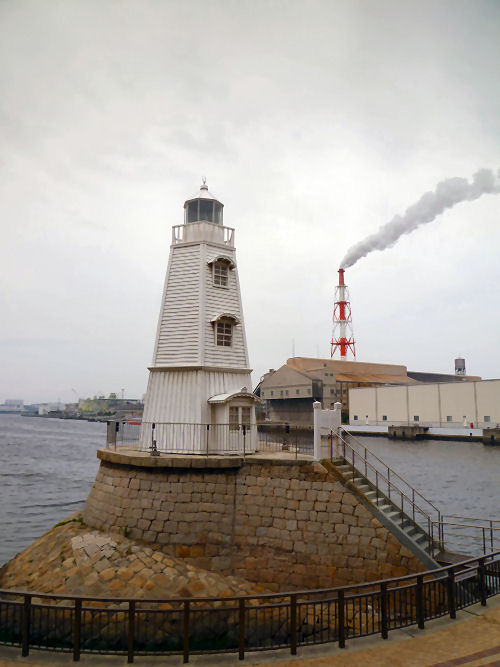
Historical Old Sakai Lighthouse, with a smokestack in the background
I can’t count the number of times I have heard foreign nationals complaining about the tragic loss of traditional Kyoto. It was one of the few major cities in Japan to be spared bombing of any sort at the end of World War II, and the fact that the old wooden buildings and roadways are mostly gone is due to the demands of modernization.
But I don’t think Kyoto is the great tragedy of Kansai. I don’t even think it has really been lost, as most of its culture and traditions are still intact, its arts are still practiced, and it is respected as the cultural center of Japan by almost all, despite the considerable legacies of places such as Edo and Osaka. And regardless of its considerable size and the laws that make preservation of wooden structures difficult, Kyoto has still managed to maintain a significant amount of its architectural legacy. The real tragedy of Kansai is the city of Sakai, which has become a dreary southern-Osaka suburb and a manufacturing center. Urbanization and modernization have not only created a city that is, for the most part, run-down and depressing, its has chiseled away at the cultural legacy of Sakai to such a degree that most Japanese don’t even know of the city’s importance in Japanese history and culture.
One of the more well-known facts about Sakai is that it has historically produced the best-quality blades in Japan, and most consider it to be one of the great centers of blade production (mostly cutlery in modern times) in the entire world. Sakai swords will set you back nearly a life savings, and genuine swords today are considered national treasures, and thus cannot be legally taken out of the country. Sakai was also a pioneer of early bicycle manufacturing in Japan, and even now produces are large amount of Japan’s bicycles. There are many crafts still done by hand in Sakai, including dying of cloth, painting of koi-nobori (Sakai is one of the rare places where this is still done by hand), and wood carving.
And let’s not forget one of the most influential cultural legacies to come of out Sakai, the tea master Sen no Rikyu, who was history’s most influential figure in developing and solidifying the art of Japanese tea ceremony–he was important enough to be the personal tea master of both Oda Nobunaga and Toyotomi Hideyoshi, two of history’s greatest shoguns and rulers. Sen no Rikyu was held in such high esteem that he helped host a tea ceremony for the emperor, and was bestowed with an honorary title as a result. And if Sen no Rikyu isn’t enough to impress you, try opening Google Maps and taking a look at some of the largest ancient imperial tombs in existence (in carefully executed keyhole shapes, large enough to be seen from space), which are scattered here and there throughout Sakai City. When excavated, these tombs contained some of the most valuable artifacts from ancient Japan that have been found, revealing a massive amount of information about ancient Japanese history, art, culture and lifestyle. And the reason these tombs are in Sakai? Because that region is where the emperors first reigned over Japan, long before Nara and then Kyoto became the capitals in the late 8th century AD.
Sakai started as a fishing village–many of the temples and shrines, including the impressive Sumiyoshi Grand Shrine, are dedicated to deities said to grant safety at sea. It later developed into a merchant town, much like its bigger neighbor Osaka, except that in the case of Sakai it was an autonomous, self-governed body (a “free city,” or 自由都市)–this was also the case with other cities in Japan at the time, including the thriving merchant town of Hakata in Kyushu. It was during this time that all the skilled crafts and arts, which are still around today but greatly under-appreciated, began to develop rapidly. Sakai was also growing into an important trade hub during this time (mostly domestic trade). Around the time of the Meiji Restoration (1868), Japan was following a similar path of “modernization” to that of Europe and the United States, but it had to industrialize more quickly in order to keep up with the world’s other top powers and avoid falling prey to imperialism. This meant that cities like Sakai grew quickly, and factories started sprouting up here and there, polluting the air and making for the start of what would come to be a dreadful cityscape. Like many other cities, Sakai was firebombed by allied forces (mostly American) near the end of World War II–according to Wikipedia statistics, 48.2% of the city was destroyed. The postwar period of high-speed growth in Japan led to further industrial development of Sakai, and today there are many large artificial islands filling the bay. Although it is better than in recent years, Sakai has not seen the shift toward a commercial rather than industrial economy as Osaka has, and smoke and sulfurous smells still fill the air near the bay.
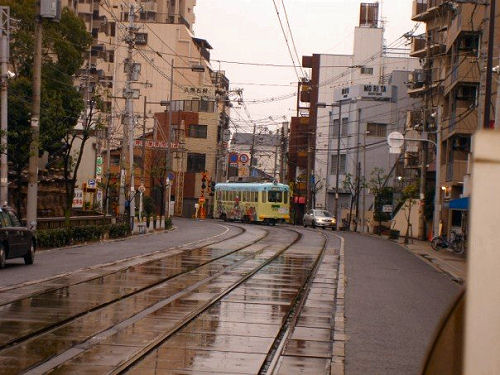
Hankai streetcar rounding a corner near Sumiyoshi Grand Shrine
Today, Sakai aims to become a model environmental city for Japan, and the national and local governments have put money and effort into achieving this end. Promising projects, such as the collaborative solar plant and factory project recently built by Sharp and Kansai Electric Power, do make it seem as if real effort is being made, but a visit to the city makes it painfully clear that Sakai still has decades (at least) before it can revert back to being a cultural icon and highly livable city. Personally, I don’t think building more is the answer; I think reducing polluting industries, expanding transportation infrastructure, enhancing technologies to cut down on pollution, and drawing in non-polluting business will be a start toward the model “green city” goal. The building of a new national (and international) soccer training facility in Sakai is seen by some as a promising new direction, especially considering its convenient location near Osaka City and Kansai International Airport.
Sakai has also made strong efforts to promote tourism in recent years, including producing sightseeing-related materials. If possible, this is something I want to promote as well. Sakai is friendly city with a fascinating and unique history, and many of its older citizens are struggling to keep its fading culture and customs alive despite disinterest among youth. Considering how tough things have been for the tourism industry after the recent earthquakes and tsunamis, and also the fact that Sakai is located right next door to bigger attractions such as Kyoto, Nara, and Osaka, it’s not going to be an easy fight. But for those of you who want to delve deeper see a more unique side of Japant, here are some places I recommend visiting:
- Nanshuji Temple: A Zen temple with a rich history, a 5-7 min. from Goryo-mae Station on the Hankai Streetcar Line
- Mozu Tumulus Cluster: The ancient keyhole-shaped tombs of great emperors, scattered throughout the city (many are concentrated near Mozu Station on the JR Hanwa Line)
- Sakai City Museum: An interesting and to-the-point museum that provides an overview of Sakai’s history, a 5 min. walk from Mozu Station on the JR Hanwa Line (near the imperial tumuli)
- Myokokuji Temple: The site of a famous samurai suicide and a 1,100-year-old cycad tree, a 5 min. walk from Myokokuji-mae Station on the Hankai Streetcar Line or a 10-15 min. walk from Sakaihigashi Station on the Nankai Koya Line
- Old Sakai Lighthouse: A lighthouse on Osaka Bay that was originally built in 1877, a 10-15 min. walk from Sakai Station on the Nankai Main Line
- Hankai Streetcar: Hankai is the only remaining streetcar operator in Osaka, and there are two lines running from Osaka (starting at Tennoji and Ebisucho) down into Sakai
Let’s not let this unique and fascinating gem of Japan slip away through negligence. I truly hope that Sakai, a casualty of development and centralization, will one day return to its former glory. At the very least, I hope it will not be forgotten.
Check out the Sakai Tourism and Convention Bureau’s sightseeing guide and Sakai City’s sightseeing guide, or stop by a tourism information center at one of the major JR or Nankai train stations where information is available in English and other languages.
Finding Fukuoka: The New Blog Is Online!
 The new blog is up! Please take a look at Finding Fukuoka, where I will be writing on Fukuoka and Kyushu from my new home in Yakuin, Fukuoka City. You have all been supportive and wonderful readers as I struggled to get Osaka Insider off the ground, and I hope you will show the same support for Finding Fukuoka. Thanks again for reading!
The new blog is up! Please take a look at Finding Fukuoka, where I will be writing on Fukuoka and Kyushu from my new home in Yakuin, Fukuoka City. You have all been supportive and wonderful readers as I struggled to get Osaka Insider off the ground, and I hope you will show the same support for Finding Fukuoka. Thanks again for reading!
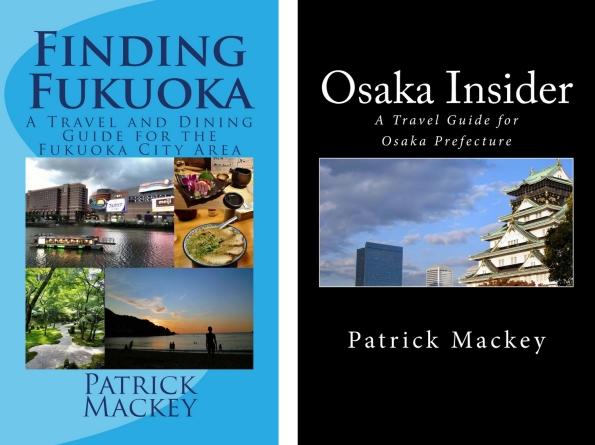
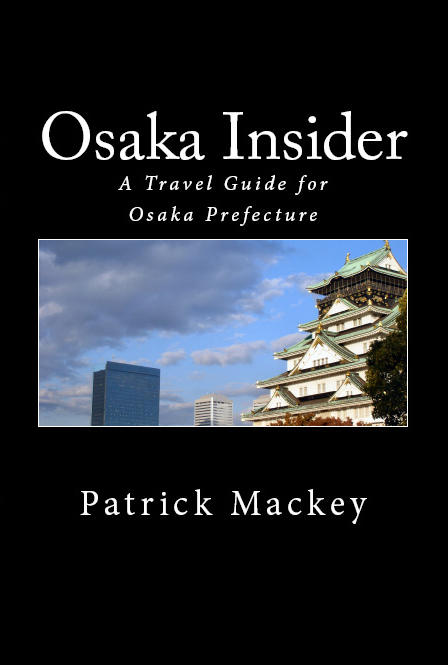
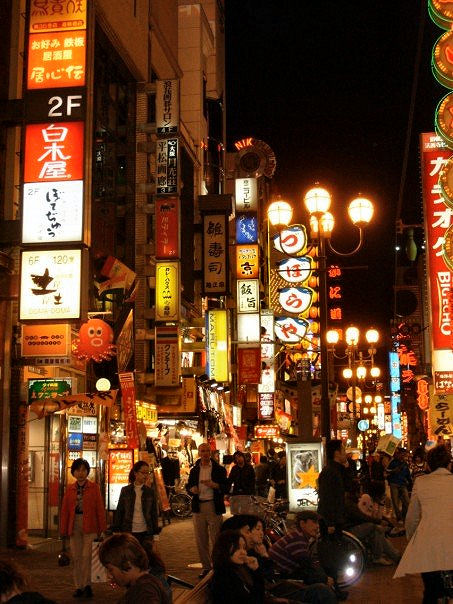
Recent Comments